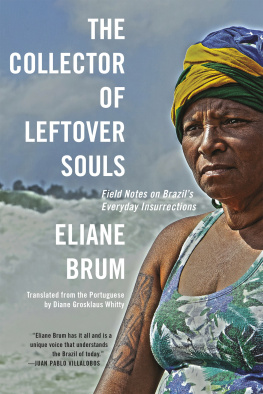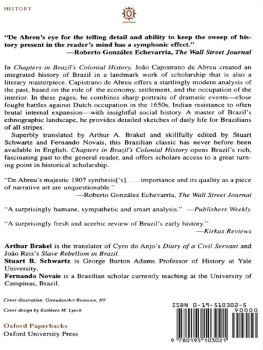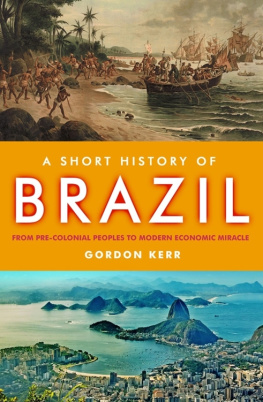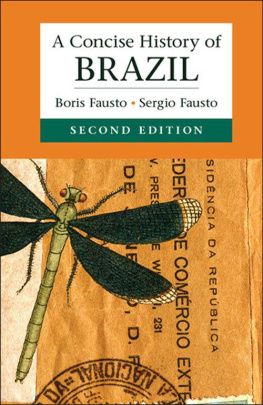BRAZIL
ON THE
RISE
BRAZIL
ON THE
RISE
THE STORY
OF A COUNTRY
TRANSFORMED
LARRY ROHTER


BRAZIL ON THE RISE
Copyright Larry Rohter, 2010, 2012.
All rights reserved.
First published in hardcover in 2011 by PALGRAVE MACMILLAN in the USa division of St. Martins Press LLC, 175 Fifth Avenue, New York, NY 10010.
Where this book is distributed in the UK, Europe and the rest of the world, this is by Palgrave Macmillan, a division of Macmillan Publishers Limited, registered in England, company number 785998, of Houndmills, Basingstoke, Hampshire RG21 6XS.
Palgrave Macmillan is the global academic imprint of the above companies and has companies and representatives throughout the world.
Palgrave and Macmillan are registered trademarks in the United States, the
United Kingdom, Europe and other countries.
ISBN: 978-0-230-12073-0
The Library of Congress has catalogued the hardcover edition as follows:
Rohter, Larry, 1950
Brazil on the rise : the story of a country transformed / Larry Rohter.
p. cm.
Includes index.
ISBN 978-0-230-61887-9
1. BrazilPolitics and government2003 2. BrazilSocial life and customs 21st century. 3. BrazilSocial conditions1985 4. Social changeBrazil History21st century. 5. BrazilEconomic conditions1985 6. Interviews Brazil. I. Title.
F2538.3.R64 2010
981dc22
2010013063
A catalogue record of the book is available from the British Library.
Design by Letra Libre
First PALGRAVE MACMILLAN paperback edition: March 2012
Printed in the United States of America.
For Clo
CONTENTS

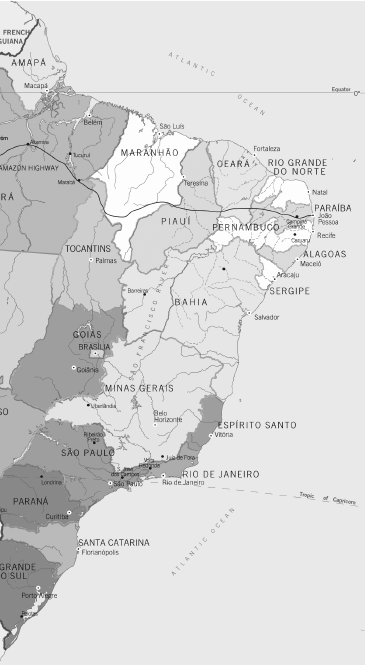
Map of Brazil (IBGE/Eric Amaral Rohter)
BRAZIL
ON THE
RISE
INTRODUCTION
THE COUNTRY OF THE FUTURE REVEALS ITSELF
I FIRST TRAVELED TO Brazil in September 1972, and like most new arrivals, I had very little idea of what to expect. In those days, I was a graduate student in modern Chinese history and politics and a part-time employee in the New York bureau of Brazils largest media conglomerate, Rede Globo, so I was thrilled when I got an invitation to visit headquarters in Rio de Janeiro and work on a music festival there. At the New York office, I was surrounded by Brazilians who spoke yearningly and nostalgically of the soccer rivalries, samba, Carnival, delicious food, and beautiful beaches and women they had left behind; saudade, I eventually learned, is the evocative Portuguese-language word for that kind of bittersweet longing. To hear them tell it, I was about to get a taste of something very close to paradise.
My strongest initial impressions, though, were of the repressive military dictatorship that ruled the country and the backwardness of the economy, then still dominated by agricultural products like coffee and sugar. At the airport, I could not help but notice the walls covered with wanted posters showing photographs of terrorists the government was hunting, many of them earnest-looking long-haired students not that different in appearance from me. The press was censored, as I discovered when I attended my first mid-afternoon editorial meeting to discuss the main nightly news broadcast and found a military officer at the table, telling editors which stories would be permitted and which would not. At night, heavily armed police stopped the cars in which I was riding with my Brazilian colleagues, brusquely demanding identity papers from all of us who were passengers.
The chic Zona Sul of Rio, where my hotel was located, felt less like a Third World country, repressive and underdeveloped, and much more like Fifth Avenue or Rodeo Drive. Walking past the fashionable boutiques that lined the streets of Ipanema and Copacabana, I saw the tanned beauties, on their way to the beach, who had been made famous by the lilting bossa nova songs I knew from the radio in the United States and noticed the striking locally produced jewelry and fashions in the windows. But I also could not avoid observing the knots of beggars sitting on the sidewalks in those chic neighborhoods, pleading for alms while keeping an eye out for the police whose duty it was to run them off, with beatings if necessary. Some of the mendicants were groups of street urchins, while others consisted of entire families who had obviously spent the previous night huddled together in the cardboard boxes on which they now clustered. Their ragged poverty offered a stark contrast to the gracefully designed sidewalk on which they sat, a work of art with a colorfully abstract, undulating stone mosaic that extended unbroken for the entire length of the beach. It was discomfiting to see these poor people, almost all of whom were black, in the midst of so much affluence and yet so removed from it, and to note the indifference of well-dressed passers-by to their plight.
And at a noisy, stiflingly hot Sunday fair outside a half-finished coliseum whose construction had been abandoned, I listened as migrants from the northeast of Brazil, a drought-ridden region that has traditionally been the countrys poorest, sang songs that spoke of their suffering and frustrated hopes with a plaintiveness that reminded me of the blues I had heard growing up in Chicago. They sang of the arduous trip south, standing for 1,500 miles on the back of a truck, exposed to the tropical sun. They sang of the poverty of the sharecroppers existence and the abusive landlords who profited from their labors. They sang of the political bosses who made promises they never kept. They sang of the poor-paying jobs they found in factories or as maids and janitors when they arrived in the south, of the slums in which they had to settle because they were poor, of the prejudice against them because of their distinctive accent and hillbilly appearance.
But the city had an enormous energy, or exuberance even, that was both immensely attractive and contagious. Listening to jokes and gibes at the governments expense, watching Brazilians walk with the jaunty, rhythmic selfconfidence that, I later learned, they call ginga, it became clear that no matter how bad the situation, Brazilians refused to let it get them down or submit to a defeatist attitude. Always there seemed to be an internal space, a core, that poverty and somber political circumstances could not penetrate, and that was where optimism and the true Brazilian spirit resided. I was smitten, on both an emotional and intellectual level. It was as if there were two separate Brazils, one official but unreal, the other real but hidden behind subterfuge. How could a society function with such a sharp contrast between outer and inner realities? I hungered to know more, and that is what drove me to return to Brazil as a correspondent, first in 1977 for an assignment that lasted five years and then again in 1999 for a nine-year stint.
When I first visited Brazil, my acquaintances there called my attention to the national flag and what it represents. The green that dominates the banner, I was told, symbolizes the vast lushness of the Brazilian countryside and the fertility of its fields. The yellow diamond-shaped figure near the center stands for gold and, by extension, the countrys great natural wealth. At the very center, written across a blue globe, is the national motto, Order and Progress. The sarcastic joke I sometimes heard at the time was that because Brazils rulers had never been able to impose the first, the country would never be able to achieve the second, and that a more appropriate and realistic slogan would be Disorder and Backwardness. Brazilians were accustomed to seeing things through that kind of skeptical prism, and it was difficult for them, with the built-in cynicism acquired through a history of extravagant ambitions and dashed hopes, to imagine that circumstances could change.
Next page



